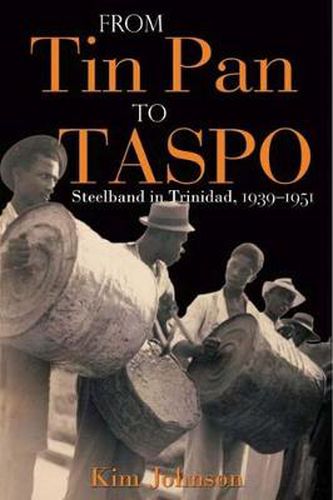Readings Newsletter
Become a Readings Member to make your shopping experience even easier.
Sign in or sign up for free!
You’re not far away from qualifying for FREE standard shipping within Australia
You’ve qualified for FREE standard shipping within Australia
The cart is loading…






From its first appearance in 1939 with a group of men knocking on pots and pans to the 1951 Trinidad All-Steel Percussion Orchestra (TASPO), steelband has fascinated the world. Relying largely on oral histories, this work investigates and documents the different technical, musical and organisational steps by which the steelband movement was born and grew to maturity.
This study is a radical break with the approach to cultural creativity in general and music of the African diaspora in particular, emphasising the role of individual agency, microsociology and aesthetic values. This contrasts with the resistance school of thought, which views music as an automatic reaction to oppression rather than a deliberate attempt to satisfy aesthetic needs and impulses.
The minute biographical and psychological details provide a unique theory of creolisation and chart its relationship to African retentions, based on empirical data. This authoritative study will appeal to both the general reader interested in the origins of steelband and to scholars concerned with the creolisation of African and European cultures and Caribbean creativity.
$9.00 standard shipping within Australia
FREE standard shipping within Australia for orders over $100.00
Express & International shipping calculated at checkout
From its first appearance in 1939 with a group of men knocking on pots and pans to the 1951 Trinidad All-Steel Percussion Orchestra (TASPO), steelband has fascinated the world. Relying largely on oral histories, this work investigates and documents the different technical, musical and organisational steps by which the steelband movement was born and grew to maturity.
This study is a radical break with the approach to cultural creativity in general and music of the African diaspora in particular, emphasising the role of individual agency, microsociology and aesthetic values. This contrasts with the resistance school of thought, which views music as an automatic reaction to oppression rather than a deliberate attempt to satisfy aesthetic needs and impulses.
The minute biographical and psychological details provide a unique theory of creolisation and chart its relationship to African retentions, based on empirical data. This authoritative study will appeal to both the general reader interested in the origins of steelband and to scholars concerned with the creolisation of African and European cultures and Caribbean creativity.